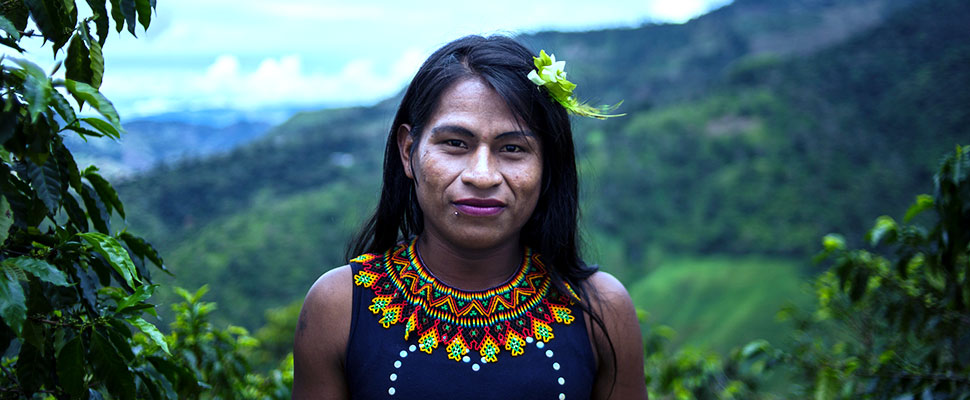This is the panorama of trans indigenous women in Colombia
In Colombia, many trans indigenous women were forced to leave their home, after being rejected by their community

Since 2010, a Colombian town became a refuge for many Embera indigenous women who left their community in an act of liberation and rebellion after being rejected and punished for being born in the wrong body, as well as a workplace as coffee pickers. It is Santuario, a municipality with approximately 15 thousand inhabitants located in the department of Risaralda, whose main economic activity is the cultivation of that plant.
Leer en español: Así está el panorama de las mujeres indígenas trans en Colombia
There, in addition to the coffee green and traditional jeeps that transport passengers from the square to the mountainside, it is usual to observe indigenous women with shorts, tank tops and painted lips. These young Embera indigenous people are transgender and were forced to leave their home because in their community they did not accept the transformation they decided to carry out.
According to data from the Mayor's Office of Santuario collected by the newspaper El Espectador, there is no exact record of the number of trans indigenous people who have arrived at the site in recent years. However, it is estimated that at least 20 of them arrive every Saturday to the town to spend their earned money in liquor, parties or make-up.
Historically, some indigenous cultures have recognized the presence of two energies within the same body. The Berdache Indians of North America, for example, accepted and honored the members with two spirits: one feminine and one masculine. However, the Embera in Colombia consider homosexuality unnatural and reject trans people.
As reported by some trans indigenous women in an interview with Univisión, in their communities they are punished for dressing or behaving as a woman. In addition, they are subjected to rituals of cleaning in which they tie them to the trees for long hours and cut their hair, to finally expel them from the indigenous reservation. The latter with the aim of preventing the spread of the "scourge" and rid the community of possible natural disasters or tragedies that may occur as a punishment to such behaviors.
It may interest you: Latin American films about indigenous people: a look at a population that has been forgotten
Trans women in Latin America: a short and limited life
According to statistics from the Inter-American Commission on Human Rights (IACHR), 80% of transgender women in Latin America are killed at or before 35 years of age. In addition, this is a population that from a very early age is rejected "in their homes, communities and educational centers". "The violence, discrimination and stigmatization that trans people suffer inserts them in a cycle of exclusion that tends to culminate in poverty, based on the lack of access to basic services, educational and employment opportunities and social benefits," the IACHR explains.
Also, as indicated by Amnesty International, transgender people are 50 times more at risk of contracting the Human Immunodeficiency Virus (HIV) and suicide rates in this community are much higher than in the rest of the population. According to data from The William Institute and the American Foundation for the Prevention of Suicide, 44% of the trans Latino population in the United States have tried to commit suicide for not being satisfied with their gender. 45% of these attempts occur in a population between 18 and 24 years old.
Research conducted by Transgender Europe revealed that Latin America is the region with the highest rates of violence against the LGBTI community in the world. However, what do Latin American countries do to promote equality and protection of the rights of such a community?
Uruguay, Argentina, Colombia, Mexico, Bolivia and Ecuador are the nations of the region with laws that recognize the right to identity, and that allow the change of gender and name in the birth certificate. Chile joined these countries on June 20, after approving the same measure even in children under 14 years of age, who can go to a family court with their parents to make the change of sex.
Bolivia and Ecuador have regulations that aim to ensure the equality of this community. However, a survey conducted by the International LGBTI Organization in 2016 shows that Bolivia is the second Latin American country that most rejects this community after Nicaragua.
LatinAmerican Post | Krishna Jaramillo
Translated from "Así está el panorama de las mujeres indígenas trans en Colombia"





